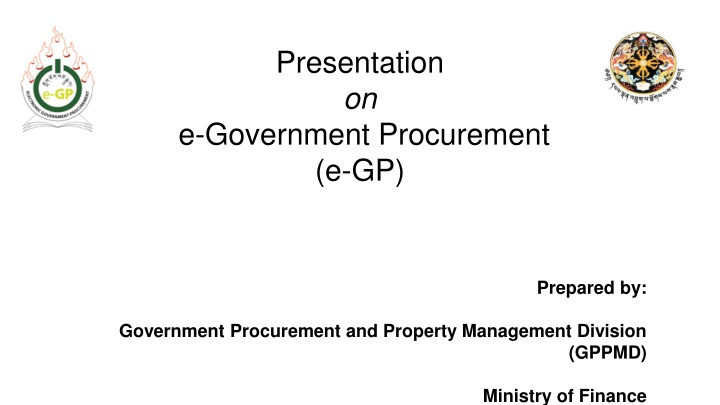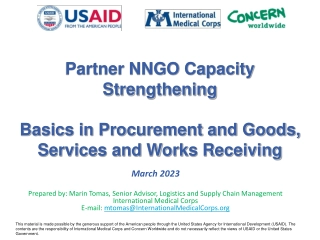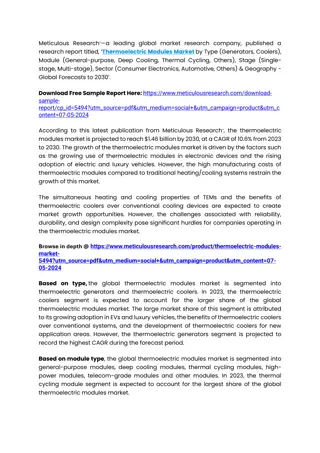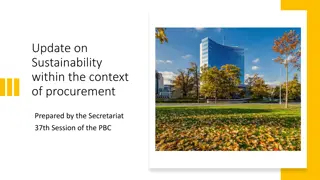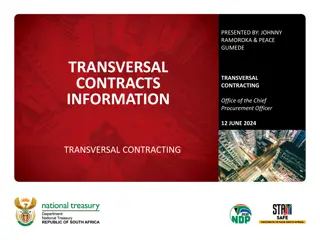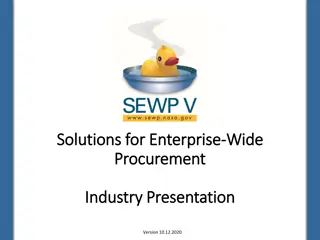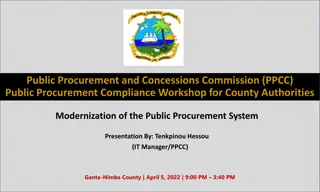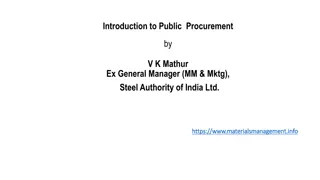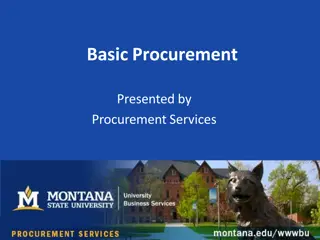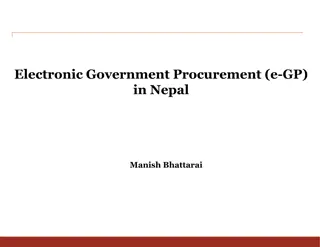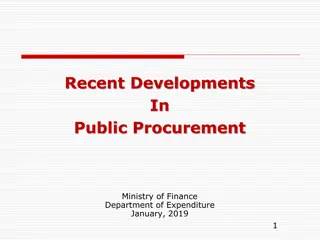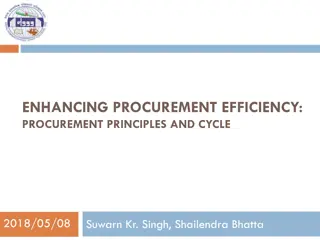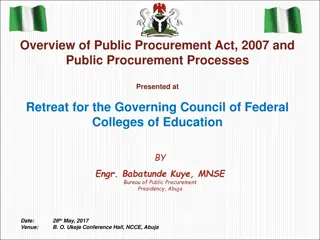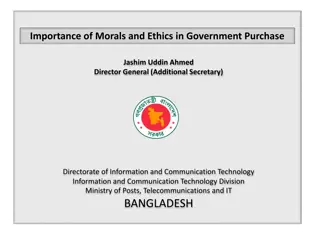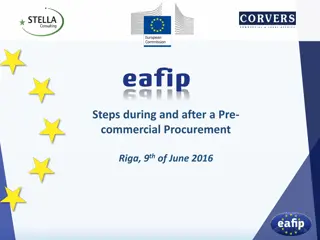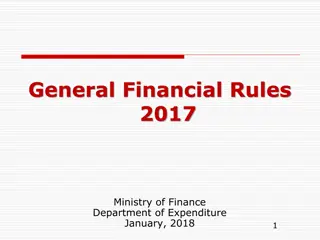e-Government Procurement: Modules, Timeline, and Implementation Challenges
This presentation on e-Government Procurement (e-GP) by the Government Procurement and Property Management Division covers milestones, modules, project timeline, current status, challenges, and the way forward for e-GP. It includes details on the preliminary study, modules of e-GP functions, project timeline phases, and the current status as of June 2017. Challenges such as resistance to implementation are also discussed, highlighting the need for managing complexity, scope, and manpower in the e-GP initiative.
Download Presentation

Please find below an Image/Link to download the presentation.
The content on the website is provided AS IS for your information and personal use only. It may not be sold, licensed, or shared on other websites without obtaining consent from the author.If you encounter any issues during the download, it is possible that the publisher has removed the file from their server.
You are allowed to download the files provided on this website for personal or commercial use, subject to the condition that they are used lawfully. All files are the property of their respective owners.
The content on the website is provided AS IS for your information and personal use only. It may not be sold, licensed, or shared on other websites without obtaining consent from the author.
E N D
Presentation Transcript
Presentation on e-Government Procurement (e-GP) Prepared by: Government Procurement and Property Management Division (GPPMD) Ministry of Finance
Content Mile stones Modules Project Timeline Current Status Challenges Way forward
Preliminary study and review started from 2015 with involvement of 60 procurement personnel MoF prioritized e-GP for FY 2015-16 approving budget Nu. 5.0 million Single portal procurement website was created with financial assistance from World Bank and IDF Grant in May, 2013 e-GP roadmap master plan was drawn Pre feasibility study on e-GP was conducted by World Bank in 2007 RGoB embarked on the e-governance initiatives during the tenth five-year plan from 2013-2018.
Modules of Electronic Government Procurement (e-GP) Functions :Phase I Functions: Phase II Functions : Phase III Bidder Registration Module Procuring Agency Registration Module Tendering Module Debarment Module Report Module Admin. Module Annual Procurement Plan eLearning Module Grievance Redressal module Clarification/complaints Module Integration Modules (Central Systems) Enhance Report Module Catalogue (products/vendors) Module Purchase order Module Reverse auction Module e-Payment Module Online evaluation Module Contract Management module Enhance Report Module Manage Funding Manage of expectation of Stakeholders Underlying ICT literacy(low) and Infrastructure(unreliable) No Appropriate Legal Framework Reasons for Phasing Out: Manage Complexity Manage Scope Manage Manpower
Project Timeline Phase I Phase II (Tentative) Phase III (Tentative) - Development/Testin g (4 months) : December 2015 March 2016 - Development/Testing (4 months): October 2017 January 2018 - Development/Testing (4 months) : October 2019 January 2020 - Launching in Phase from February 2018 June 2019 - Launching in Phases from February 2020 June 2021 - Launching in Phases from April 2016 June 2017
Current Status Jan 2017 - June 17 Reviewed the system by team Conducted User Acceptance Test(UAT) for Procurement of Goods and Works Ongoing user awareness workshops and trainings Conducted requirement study for consultancy services
Implementation Challenges Resistance to use the system Infrastructure Issues IT literacy Issues Lack of awareness and training to use the system, GPPMD under staff to provide first level help desk support No dedicated project team(full time & project specific
Way Forward 1. Business Continuity Plan 2. TOT training and user Training schedule from April 2017 3. Four piloting agencies covering works and goods 4. Soft Launching schedule in June 2017 5. Rollout gradually 6. Government will issue executive order for full compliance later
